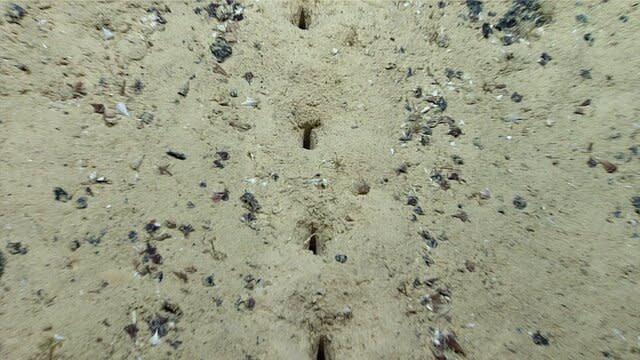Mysterious holes dot the ocean floor and no one knows what made them
Mysterious and unexpected holes in the ground almost never end well. That’s certainly the case for the characters of La Brea (now streaming on Peacock!) who find themselves pulled into a massive sinkhole and transported back to 10,000 BCE. However, in the real world, unexplained holes could be portals to new discoveries.
Thanks to the progress made through scientific enquiry, we tend to think we have a pretty good handle on how our world works, but that couldn’t be further from the truth. We don’t even know what we don’t know and that’s especially true when it comes to the world’s oceans. Only about 10% of the global ocean has even been mapped, let alone substantially explored. Considering that roughly two-thirds of our planet’s surface is covered over with water, that amounts to a whole lot of potential mysteries.
Earlier this year, the National Oceanic and Atmospheric Administration (NOAA) began a five-month collaboration with partners to map the Charlie-Gibbs Fracture Zone, the Mid-Atlantic Ridge, and the Azores Plateau. The expedition, dubbed Voyage to the Ridge 2022, is using remotely operated vehicles at depths up to six kilometers beneath the ocean’s surface to gather information about largely unexplored terrains and ecosystems.
On July 25, 2022, NOAA took to social media with an unusual discovery, in hopes that the public’s collective knowledge and curiosity might be able to solve a bizarre underwater mystery. During dive 04 of the expedition, researchers came upon a series of holes in the seafloor, at a depth of approximately 1.6 miles below the ocean’s surface.
The holes are rectangular in shape and form a nearly straight line. They repeat at regular intervals and are each a few inches apart. According to NOAA, a similar set of holes was observed in 2004 and was, likewise, unexplained. During the dive, scientists attempted to probe the holes with instruments and look inside but were unsuccessful. Perhaps that’s for the best, we don’t know what’s down there and how it might react to be poked by an underwater robot.

Close Up Holes In The Seafloor Photo: NOAA Ocean Exploration, Voyage to the Ridge 2022
The shape and regularity of the holes give the impression that they are human made. However, by all accounts they aren’t the result of the expedition itself and it’s unclear what other human technologies could be responsible. Furthermore, each hole is surrounded by small piles of seafloor sediment, suggesting they were dug out by something.
Scientists involved with the expedition suggest they might be the result of an as yet unknown subsurface organism or, alternatively, a larger animal digging holes with a feeding appendage. Despite these hypotheses the holes remain a mystery, one which scientists hope the public might be able to help solve. Suggestions in the comments of NOAA’s Facebook post include tectonic activity, tiny kaiju, aliens, and starfish doing cartwheels. While there’s equal evidence for all of these hypotheses — read: very little — some of them are more likely than others, no matter how fun they may be to envision.
Expeditions like Voyage to the Ridge 2022 are helping to close the gaps in our understanding of the natural world but these strange deep-sea holes are a reminder that each new discovery reveals new questions. They aren’t just holes in the seafloor, they’re also holes in our knowledge. Hopefully, we’ll be able to fill them before the miniature monsters emerge.


